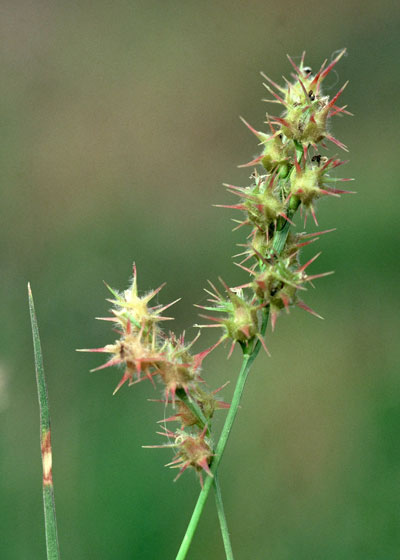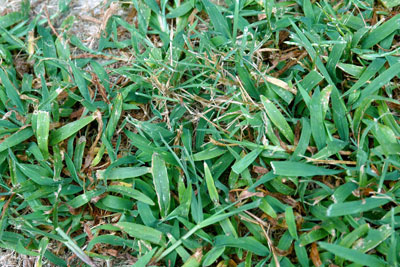Pre-emergent/Now or Never!
I’ve heard it 30 times in the past week: “Neil, I blew it. I’m too late for the pre-emergent this spring. My yard is already full of weeds.”
Those are nice folks. Many are friends. But they’re missing the boat entirely on timing of pre-emergent weedkillers.
PRE-emergent means you must apply the granules BEFORE weeds emerge – before their seeds start to sprout. You must apply pre-emergent weedkillers in anticipation of the weeds, not in response to them.
“Warm-season” weeds such as crabgrass and grassburs are what we’re trying to prevent at this time. (I’ll talk about those cool-season weeds my friends are seeing right now sometime in late August. That’s when you’d apply the pre-emergent for them.)
Critical Note…
We have no second chance when it comes to these weeds. We have no herbicide that will kill them without killing our lawngrasses. Prevention is your only hope, and this is your only time of the year.

Photo: Grassburs, also known as sandburs, grow most commonly in sandy soils. The burs are their seeds, and if you had them last year, you must apply the pre-emergent to prevent them this year.

Photo: Crabgrass is a lawn and garden invader. It has short runners that can extend out 8 or 12 inches from the crown. Seed heads look like helicopter rotors. Leaves are medium green. Do not confuse this grass with dallisgrass (clump-forming perennial grass with very dark green leaves and black, peppery specks on the seeds). Crabgrass is also prevented by the pre-emergent weedkillers. Dallisgrass will not be.
Here are the facts…
Timing: For most of Texas, in this warm late-winter year, you are now in prime time for application of pre-emergent granules. If you’re in South Texas, you’re almost out of time. If you’re in far North Texas or the Panhandle, you can wait until mid- to late March.
Products: There are several types of pre-emergent granules. Team and Dimension are sold primarily through independent retail garden centers and hardware stores. Halts is sold through national chains. If you hire someone to take care of your lawn applications, they may have yet another type that they buy commercially.
Where can they be used? Read the label and follow its directions, but generally these products are cleared for use on any type of lawngrass and beneath trees and near shrubs.
Can they be used on new lawns? Not until that lawn has been through its first winter. In fact, if you sodded grass in late summer or fall last year, I would suggest you not apply pre-emergents to it this year. They slow development of roots, and you don’t want that with new grass.
Here is the sequence…
1. Mow your lawn to eliminate as many weeds as possible. If you intend to drop the mower down one notch for this first mowing (to “scalp”), do so at this time.
2. Apply your pre-emergent granules according to label directions on that same day. Water lightly to help form a layer of pre-emergent across the top of the soil.
3. If broadleafed weeds survive the mowing or scalping, apply a broadleafed weedkiller spray (containing 2,4-D) to them once they have started to regrow vigorously (usually at least one week after mowing).
4. Wait three or four weeks to apply a fertilizer. (Which is one reason I won’t recommend weed-and-feed products.)
Critical Note…
Texas has a very long growing season, so if you expect to prevent crabgrass and grassburs (and other annual weeds) for this entire season, you will need to make a second application 90 days after the first. It doesn’t have to be the same product, but it must be made before the weeds can start to germinate in June.
